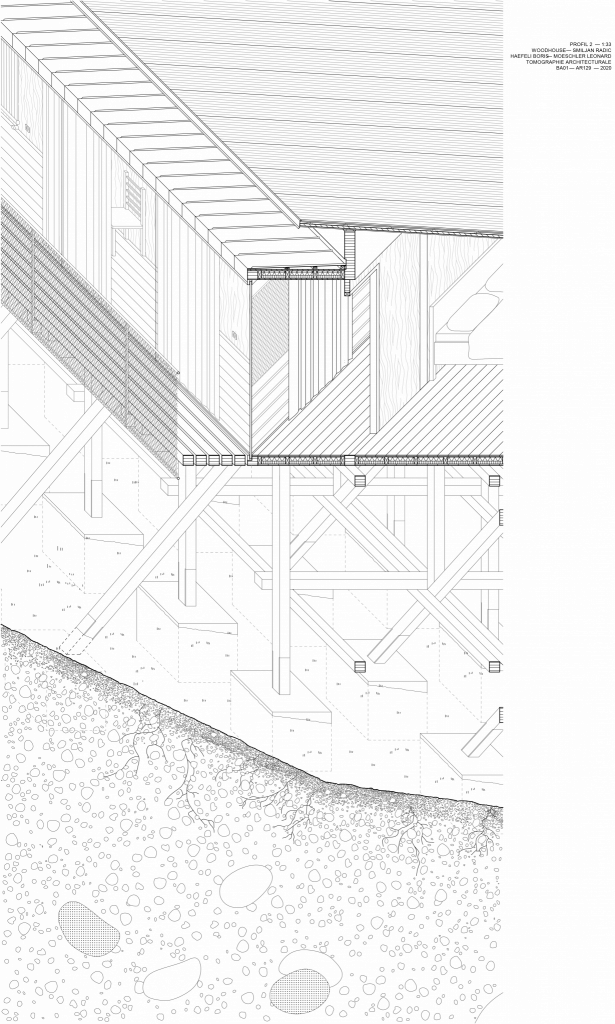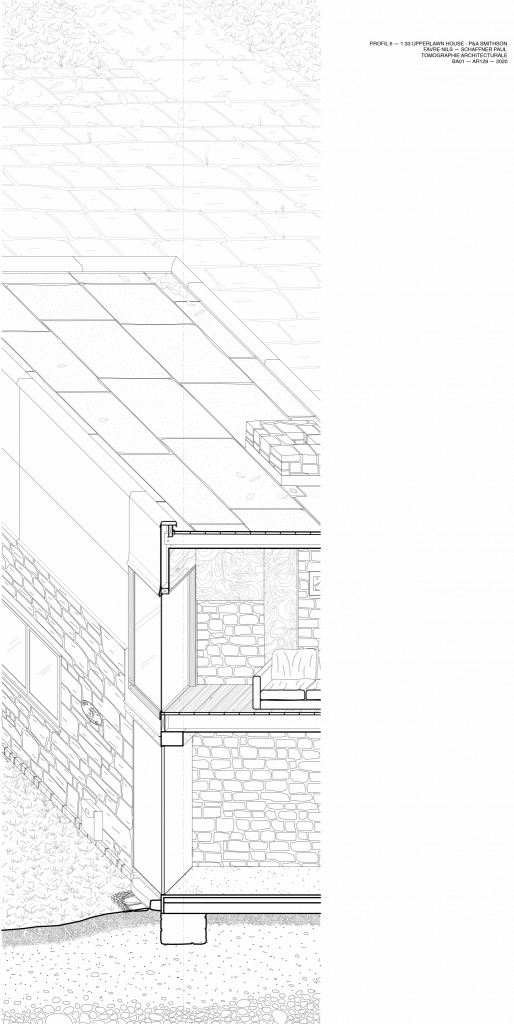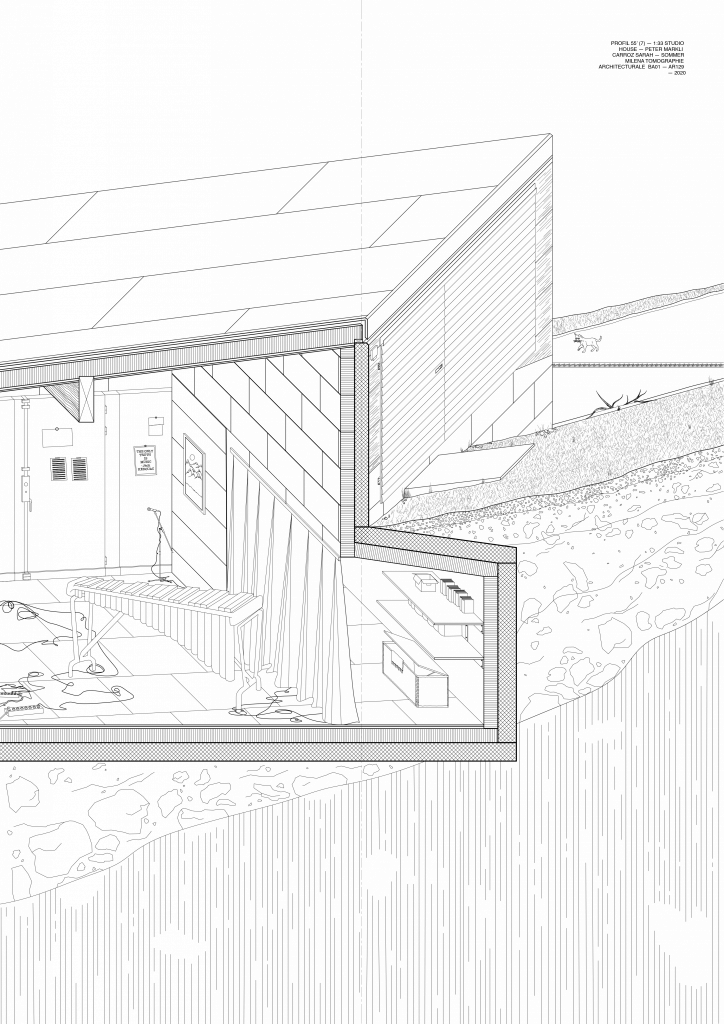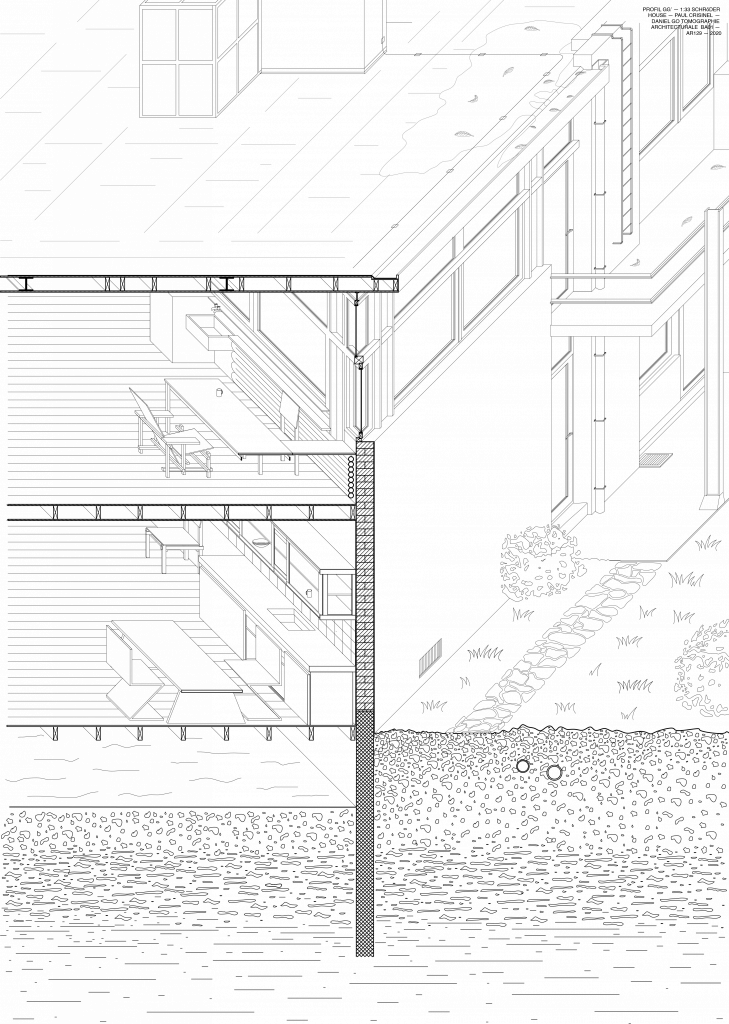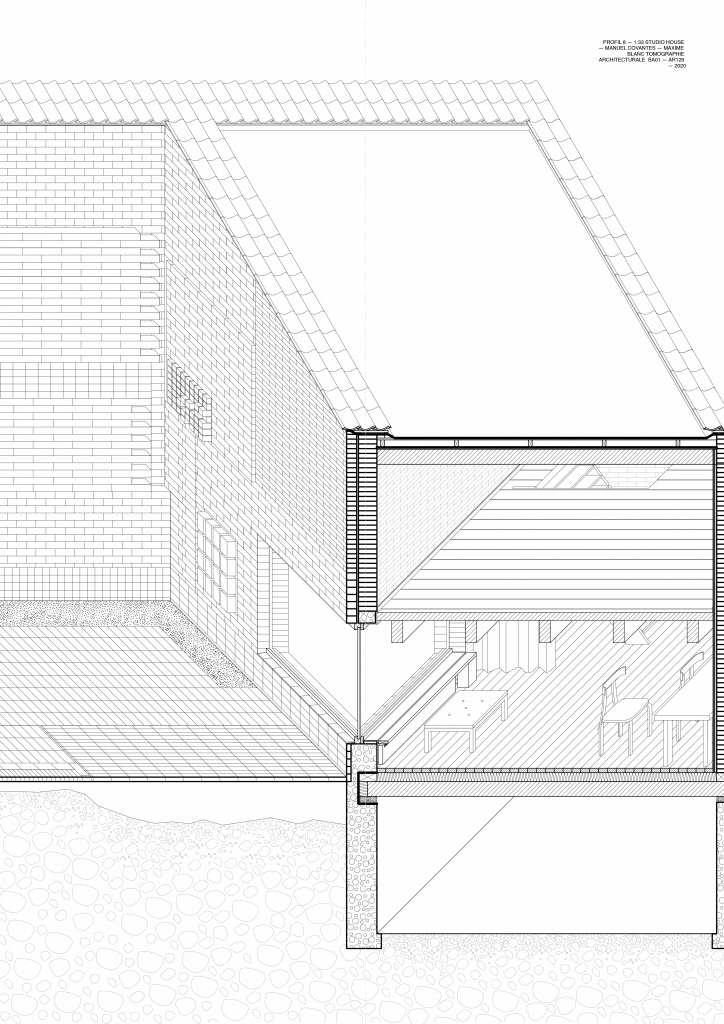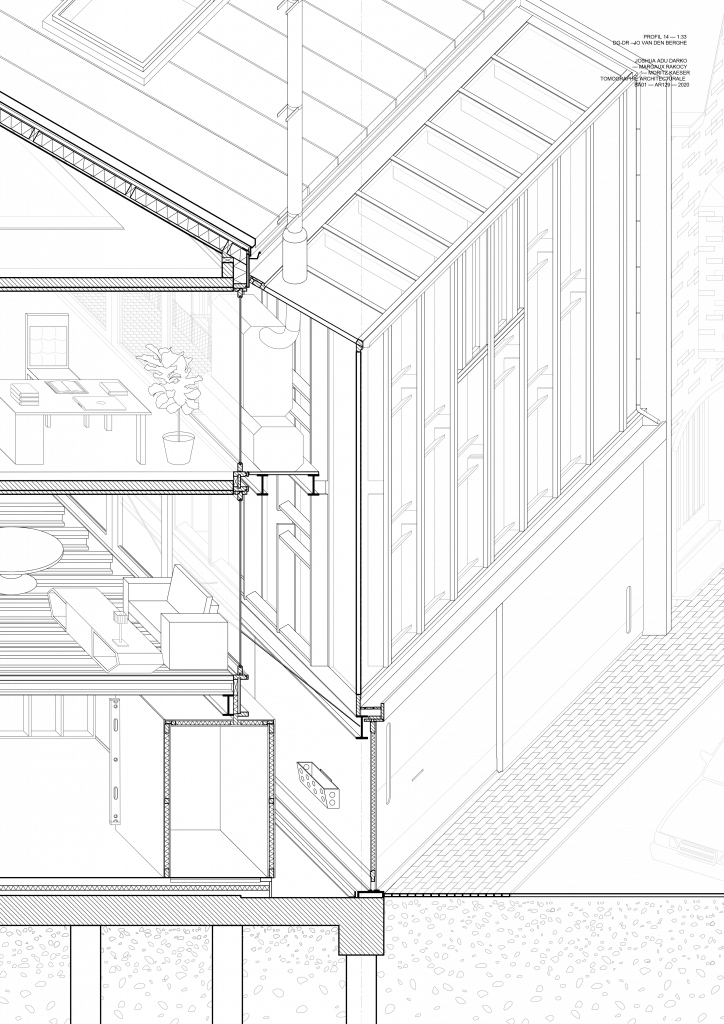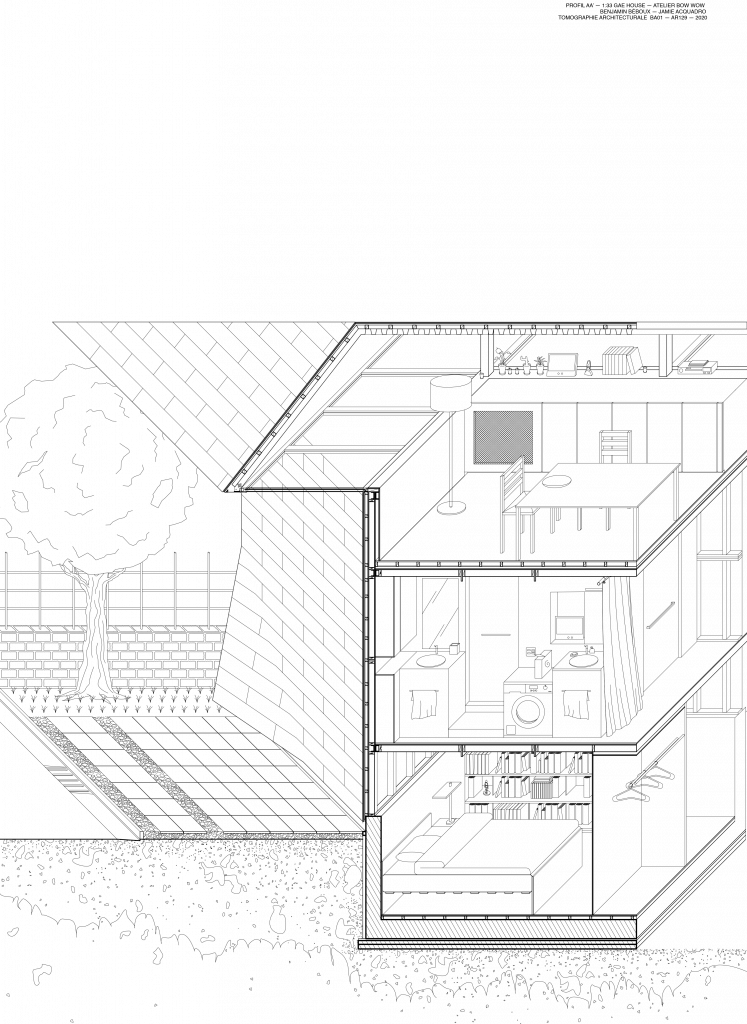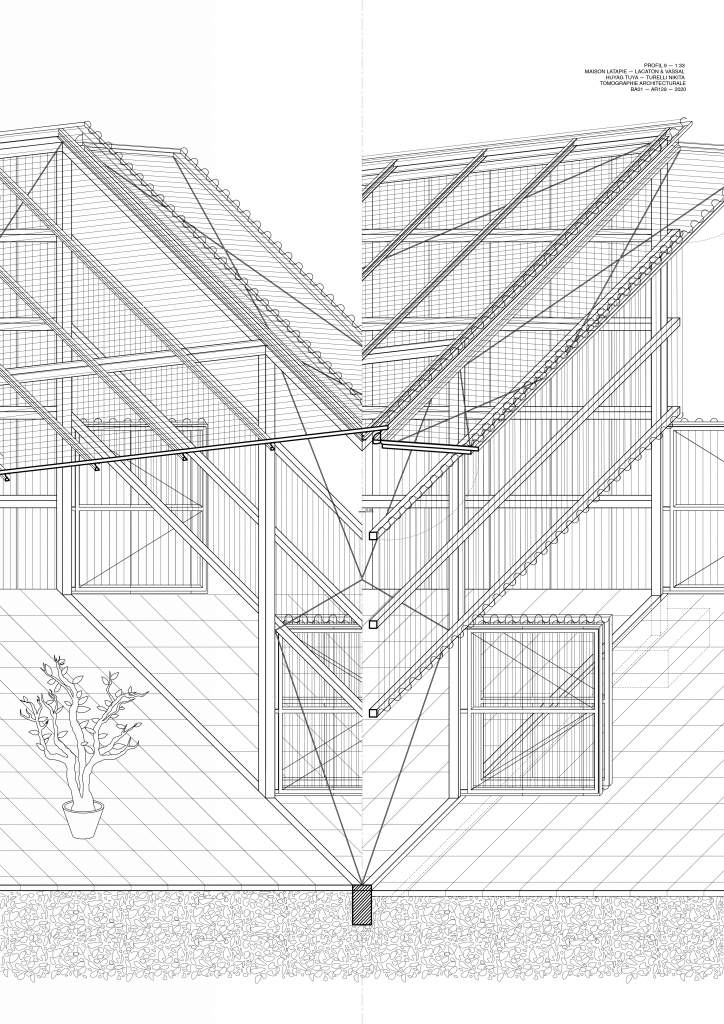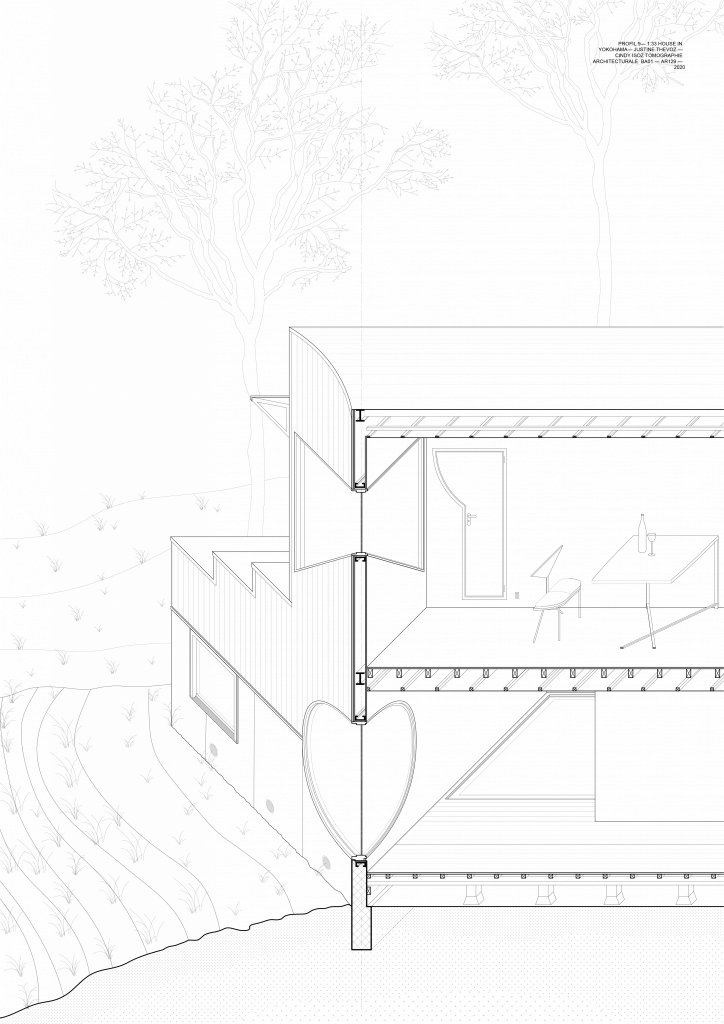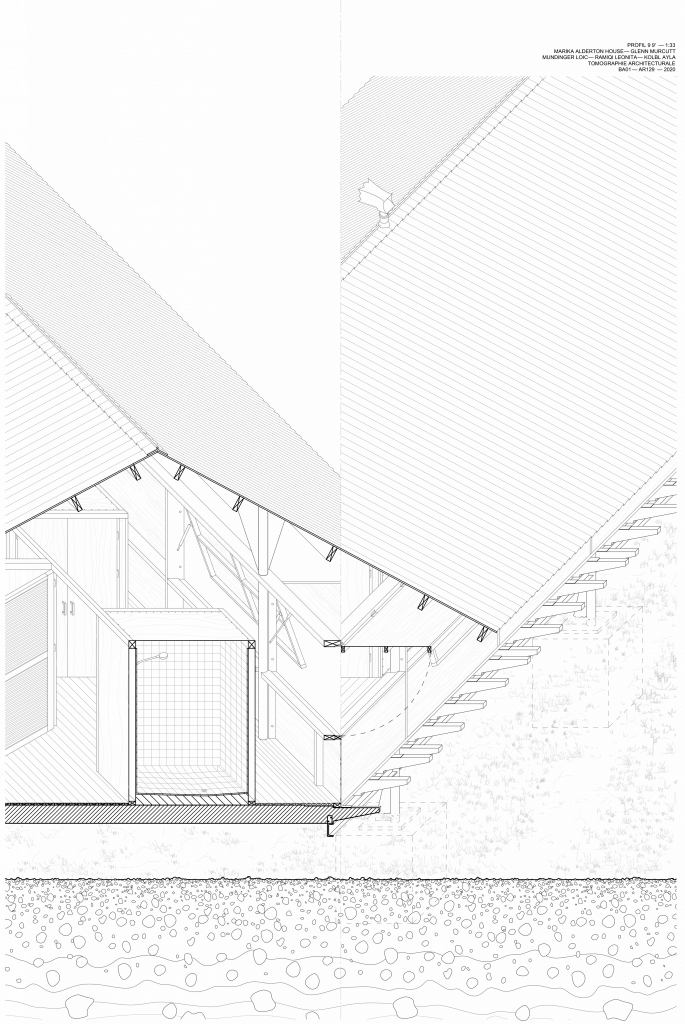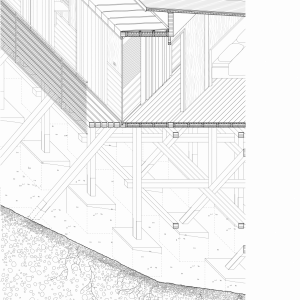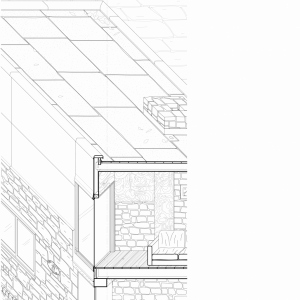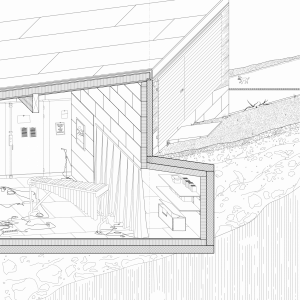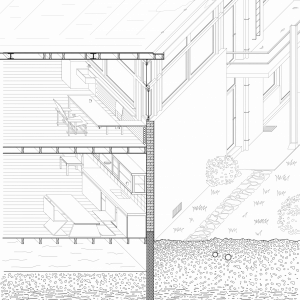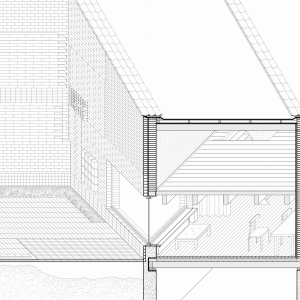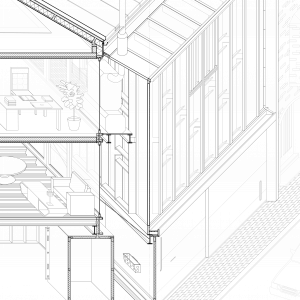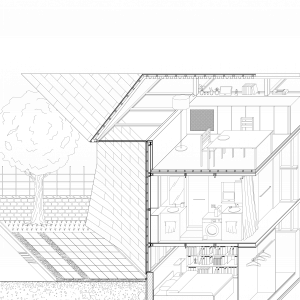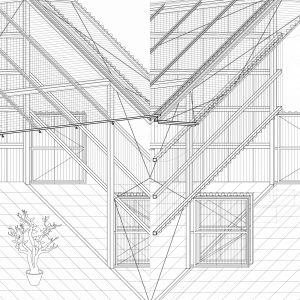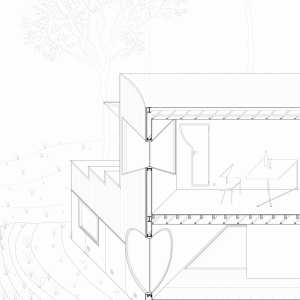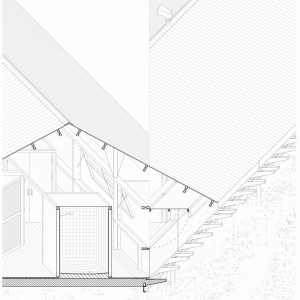ALICE
Final Review, 02.12.2020
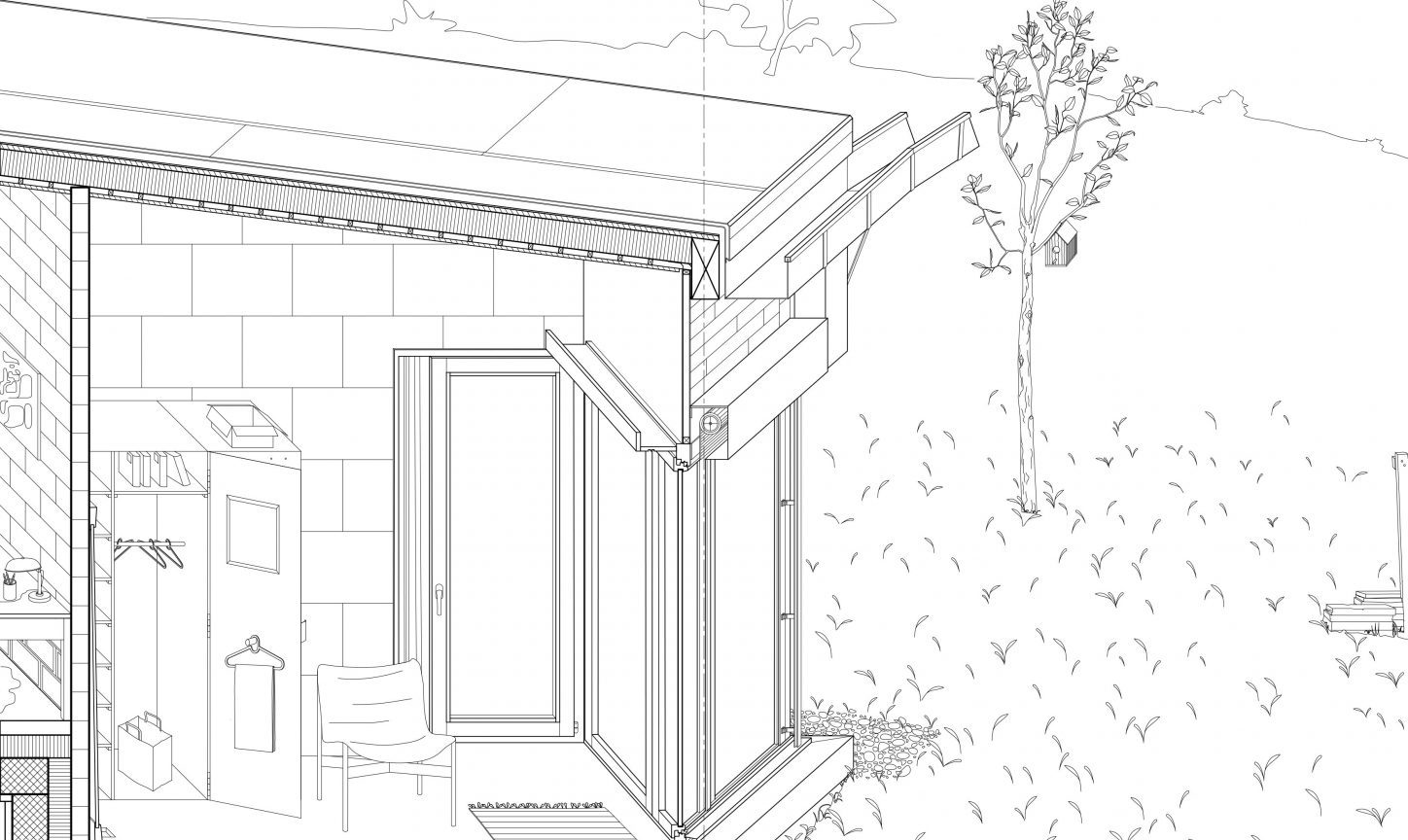
.
This teaching situates technical drawing as a tool for spatial, constructive and contextual inquiry. It introduces iterative section as a sociotechnical tool for the architect to measure, understand and interpret constructed situations.
The act of drawing fulfils, in architecture, several functions such as prescription, description and/or speculation (Estevez, 2001; Spiro, 2013). In a context of development of integrated modelling strategies, such as BIM, technical drawing tends to be reduced to its predictive capacity. Hence, it is losing its fundamental role in measuring, understanding, interpreting and imagining complex spatial conditions (Dietz and Zamarbide, 2018).
As a counterpoint to this reduction, this course positions the act of drawing as an act of spatial and constructive investigation (forensic dimension). It introduces 2-D sectional drawing, both horizontal and vertical, as a crucial skill in architecture, as well as a critical lens to investigate situated architectures (Bow-Wow, 2007 ; Fromonot, 2018).
Sectional drawing shows the gravity-fed morphology of a building and its constructive logic. In a strong analogy with medical discourse and imaging technologies (Colomina, 2019), this course introduces architectural tomography as a way to reveal the architecture anatomy and make visible inner spatial structuresotherwise inaccessible to vision and experience. It is a tool that allows also for contextualization in time and space, going beyond the narrow limits of architecture read as an object and scrutinizing its relational setting to a wider environment. As explored in geology and archeology, sectional drawing allows connection to the ground in all its thickness (natural topography, networks, underground infrastructures). It also gives access to an understanding of time by revealing stratification logics, disjunctions between hardware and software, extensions, partial demolitions, etc. Therefore, in the framework of this course, sectional drawing is regarded as a fundamental and operational sociotechnical tool (Akrich and al., 1987)
In order to empower the students to perform sectional drawing while developing a reflexive and critical understanding of this specific act, a series of investigations will be conducted on a corpus of buildings selected for their rich spatial features and their strong link to their environment. It will therefore be about reconstructing matter, structure and spatialities of these projects through 2-D sectional drawing. For the first session (September-December 2020), the annual corpus will focus on unconventional houses. Through the semester, a transition from analog drawing techniques to digital tools will be introduced to perform the sections and articulate a collective production around each house.
Teachers – Tiphaine Abenia and Jo Taillieu
Assistants – Céline Carrière, Constantin Guichard, Noémie Zurbriggen, David Rodriguez, Charles Dubois, Lara Giorla, AntoineIweins, Kyra Michel, Ziad Wahida, Simon Wüst, Louis Conforti
Image – extrait du travail de Juan Garcia-Bellido et Nathan Wanner (enquête sur la Studio House, Peter Märkli)
Final Review – 02.12.2020
